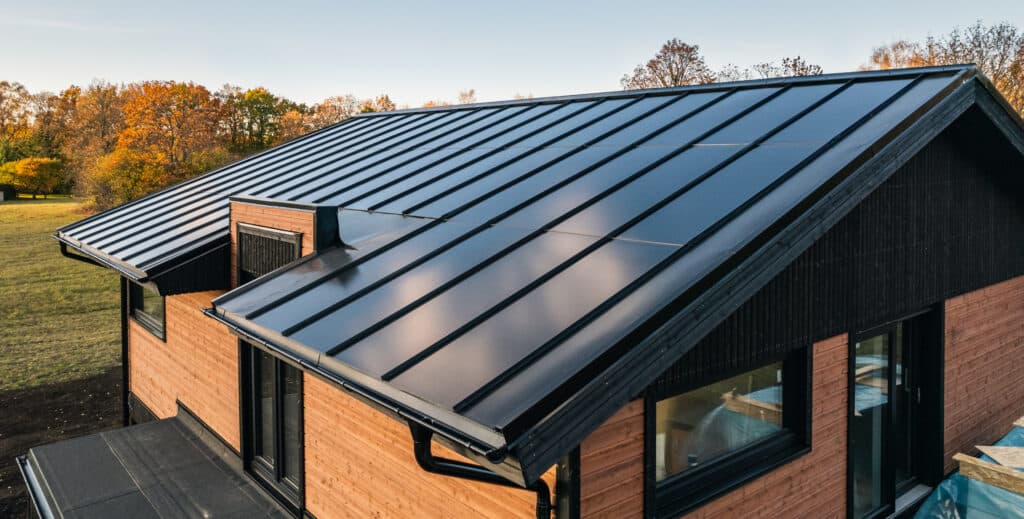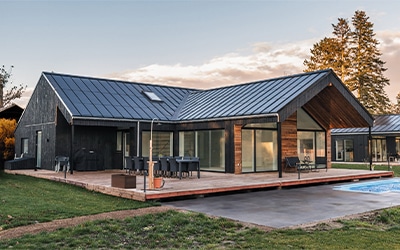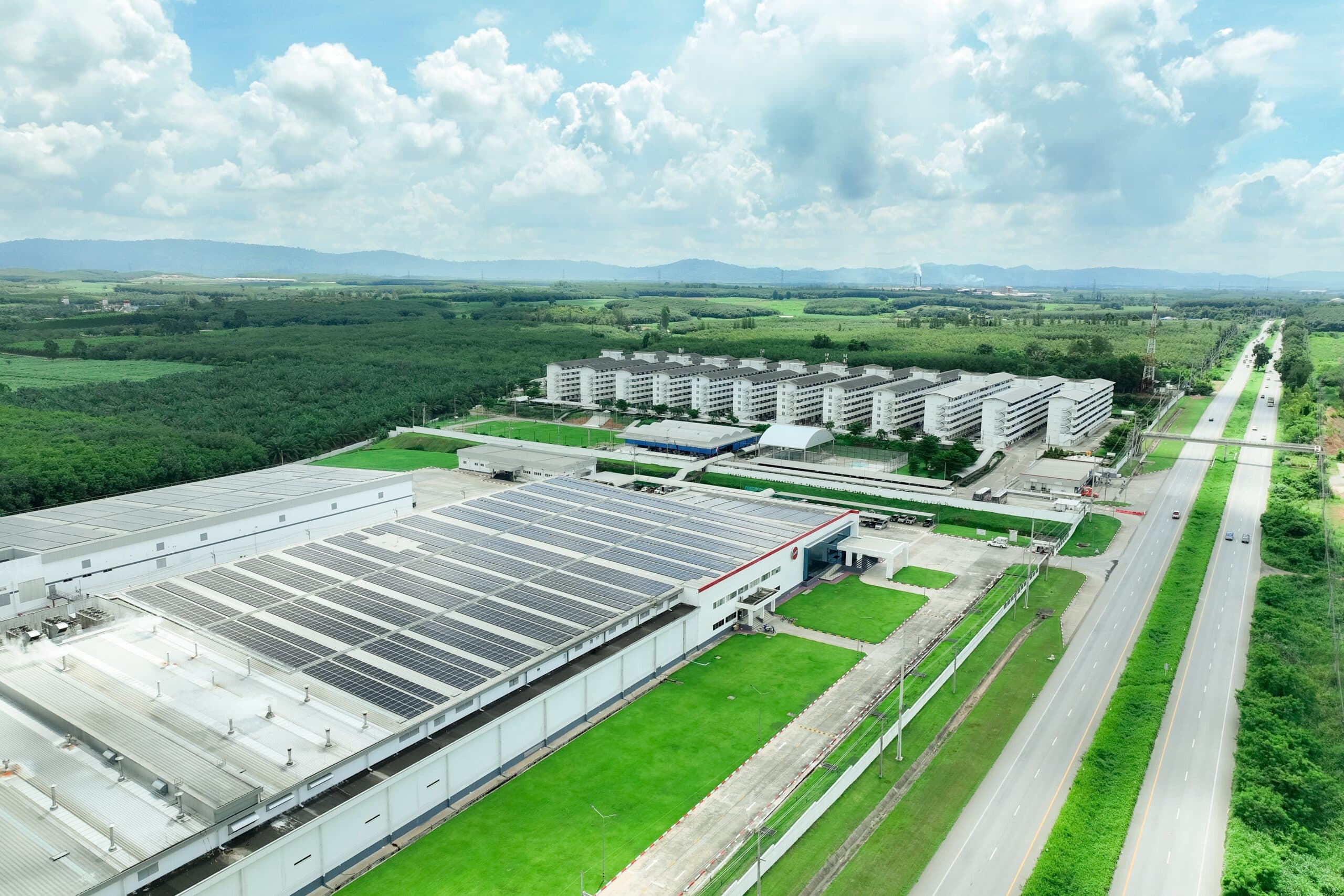Are you considering installing a heat pump in your home but not sure which type is right for you? In this article, we will explore the difference between air-source heat pumps and ground-source heat pumps to help you make an informed decision.
When it comes to air source heat pumps, they work by extracting heat from the outside air and transferring it into your home. This process is achieved through a refrigerant that absorbs the outdoor heat and then releases it indoors. Air source heat pumps are highly efficient and can provide both heating and cooling for your home, making them a versatile option.
On the other hand, ground source heat pumps utilise the stable temperature of the earth to extract or release heat through underground pipes. By harnessing geothermal energy, these systems can provide reliable heating and cooling throughout the year, regardless of the weather conditions above ground.
Now that you have an overview of how each type of heat pump works, let’s delve deeper into Air Source Heat Pumps vs. Ground Source Heat Pumps, their efficiency and energy savings potential in our next section.
How Air Source Heat Pumps Work
Air source heat pumps operate by using a refrigerant to absorb heat from the outside air. The refrigerant is then compressed, which increases its temperature. This hot refrigerant is then used to heat up the air inside your home through a condenser coil.
As the heated air circulates throughout your living space, it warms up every corner of the room, ensuring that no area is left chilly.
One of the key advantages of air-source heat pumps is their versatility. They can both cool and heat your home, making them suitable for year-round use. During warmer months, they can reverse their operation and act as an air conditioner by extracting warm air from inside your house and releasing it outside. This dual functionality makes them a cost-effective solution compared to traditional heating or cooling systems.
Another benefit of air-source heat pumps is their efficiency in converting energy into usable warmth. Though they may rely on electricity to power the compressor and pump system, they produce more energy than they consume.
This means that for each unit of electrical energy used, several units of thermal energy are generated, leading to substantial savings on your utility bills.
How Ground Source Heat Pumps Work
Ground source heat pumps, also known as geothermal systems, harness the natural heat from beneath the Earth’s surface to efficiently warm and cool your home.
Unlike air-source heat pumps that extract heat from the outdoor air, ground-source heat pumps utilise a series of underground pipes filled with a mixture of water and antifreeze. These pipes are buried in the ground, where temperatures remain relatively constant throughout the year. Here’s how it works:
- The earth acts as a natural thermal reservoir, providing a consistent source of heat for the pump to extract. The process begins with an underground loop system that circulates the water and antifreeze mixture through the buried pipes. As this fluid flows through the loops, it absorbs heat from the surrounding soil or groundwater. This absorbed heat is then transferred to a refrigerant within the heat pump unit located in your home.
- The refrigerant evaporates at low temperatures due to its low boiling point, absorbing even more thermal energy in the process. Once heated, the refrigerant is compressed by a compressor inside the pump unit, raising its temperature even further.
- This compressed and superheated vapor is then passed through a condenser coil where it releases its stored thermal energy into your home’s heating or hot water system. The now-cooled refrigerant returns to its liquid state and repeats this cycle again and again.
This geothermal technology offers increased efficiency, reliability, and environmental benefits. So if you’re looking for a sustainable and efficient way to heat and cool your home, ground-source heat pumps are definitely worth considering.
The Energy Efficiency of GSHPs
Ground source heat pumps (GSHPs) have been proven to be highly efficient, with the ability to provide up to four units of heating or cooling for every unit of electricity used. This is because GSHPs utilise the stable temperature of the ground as a heat source during winter and a heat sink during summer. By tapping into this constant underground temperature, GSHPs can achieve high levels of efficiency, resulting in significant energy savings.
One key factor that contributes to the efficiency of GSHPs is their ability to operate at lower temperatures compared to air-source heat pumps (ASHPs). ASHPs rely on extracting heat from the outside air, which can vary greatly in temperature depending on the season and climate.
The Energy Efficiency of ASHPs
ASHPs work most efficiently in regions with moderate climates. They perform well in temperatures above freezing and can continue to provide heat in colder climates, although their efficiency may decrease significantly in extremely low temperatures.
On the other hand, GSHPs consistently extract heat from the ground, where temperatures remain relatively stable throughout the year. This enables them to maintain high efficiency levels regardless of external conditions.
However, it is worth noting that most modern ASHPs are designed with advanced technology and variable-speed compressors, which allow them to adjust their output to meet the heating or cooling demands, enhancing efficiency.
Energy Savings Comparison
The energy savings of ASHPs and GSHPs depend on various factors, including climate, energy costs, installation costs, and system efficiency.
GSHPs tend to offer more consistent and higher energy savings, especially in extreme climates, but they come with a higher upfront price tag. ASHPs are generally more cost-effective in moderate climates and may have a shorter payback period, but their efficiency can decrease in extreme conditions.
Your choice should align with your specific needs, budget, and regional climate.
Environmental Impact and Sustainability
When comparing Air Source Heat Pumps (ASHPs) and Ground Source Heat Pumps (GSHPs), their environmental impact and sustainability considerations are of significant importance. ASHPs and GSHPs both offer greener alternatives to traditional heating and cooling systems, but they differ in their environmental profiles.
ASHPs, which extract heat from the outdoor air, are highly energy-efficient, producing little to no direct emissions. However, their efficiency can vary with outdoor temperatures, potentially requiring supplemental heating in extremely cold climates. This may lead to increased electricity consumption during peak demand periods.
On the other hand, GSHPs leverage the stable ground or water temperature for heating and cooling, resulting in consistently high efficiency. They produce fewer direct emissions and have a lower carbon footprint compared to ASHPs. GSHPs are a sustainable choice, especially when coupled with renewable electricity sources, contributing to reduced greenhouse gas emissions and long-term environmental benefits.
When considering the environmental impact, homeowners and businesses must assess their regional climate, available space, and commitment to sustainability goals. GSHPs tend to align more closely with sustainable energy practices due to their reliability and reduced energy consumption in extreme weather conditions, making them a preferred choice for those seeking a greener heating and cooling solution.
Installation of ASHPs vs. GSHPs
To ensure a successful and efficient installation, it’s important to consider factors such as the size of your property, soil conditions, and available space for the geothermal system. Consider the following factors:
The Ground & Soil Quality
Soil conditions also play a significant role in the installation process. For ground source heat pumps, the pipes need to be buried underground. The type of soil on your property will affect how easily these pipes can be installed. Sandy or loamy soils are generally easier to work with as they allow for better thermal conductivity and efficient transfer of heat between the ground and the system. However, if you have rocky or clay-rich soil, additional drilling or excavation may be required during installation, leading to increased costs and potential complications.
The Space Available
Available space for the geothermal system should be taken into consideration. Air source heat pumps typically require less indoor space compared to ground source systems because they do not require extensive ductwork or large equipment rooms.
Ground source systems often need dedicated areas for housing equipment such as geothermal loops and pumps. Therefore, if you have limited indoor space or prefer minimal disruption to your existing layout during installation, an air source heat pump might be a more practical choice.
Considering these factors before installing either an air source or ground source heat pump will help ensure that you choose the right system for your property’s specific requirements while maximising efficiency and energy savings in the long run.
The Price of ASHPs vs. GSHPs
The price difference between Air Source Heat Pumps (ASHPs) and Ground Source Heat Pumps (GSHPs) can be significant and depends on several factors. Generally, ASHPs have a lower upfront cost for equipment and installation.
They are more accessible for homeowners looking for a cost-effective way to upgrade their heating and cooling systems. In contrast, GSHPs involve higher upfront expenses due to the installation of ground or water loop systems, making them a substantial investment.
However, when assessing the overall cost-effectiveness, it’s crucial to consider long-term operational expenses. GSHPs tend to have lower ongoing energy costs, especially in extreme climates, where ASHPs may require supplemental heating or cooling.
Over time, the energy savings of GSHPs can offset their initial higher costs, making them a financially attractive option for those planning for the long haul. ASHPs, on the other hand, may have a quicker payback period, particularly in regions with moderate climates.
Ultimately, the choice between ASHPs and GSHPs depends on your budget, energy goals, and regional climate conditions. It’s advisable to consult with HVAC professionals to conduct a cost-benefit analysis tailored to your specific circumstances before making a decision.
Are There Government Grants For ASHPs & GSHPs?
There are a multitude of grants which can help you afford the upfront cost of air-source heat pumps and ground-source heat pumps. These grants are funded by government organisations across the UK, as part of their aim to reach Net Zero by 2050.
The Boiler Upgrade Scheme (England & Wales)
The Boiler Upgrade Scheme can help you afford a new air-source heat pump or ground-source heat pump for your property. It offers homeowners £5,000 to help them upgrade from a gas or fossil fuel boiler to a low-carbon alternative. You must be replacing a gas-powered or fossil-fuel boiler to be eligible for this grant.
Home Energy Scotland Grant
You can apply for a £7,500 grant or loan from the Home Energy Scotland organisation if you live in Scotland. This grant can entitle you to:
- Up to £15,000 to install an ASHP or GSHP (up to £7,500 as a grant plus up to £7,500 as an optional loan).
- Grants up to 75% of the combined cost of improvements to improve home energy efficiency.
- A £1,500 top-up if you live in a rural area.
To apply, you must contact Home Energy Scotland to begin filling in the application forms and check if you’re eligible. You can also contact your local council for more information on grants.
Maintenance and Performance Optimisation
Proper maintenance is vital for both Air Source Heat Pumps (ASHPs) and Ground Source Heat Pumps (GSHPs) to ensure their longevity and efficient operation. For ASHPs, routine tasks include cleaning or replacing air filters, checking refrigerant levels, and inspecting fans and coils. Additionally, clearing any debris or obstructions around the outdoor unit helps maintain optimal airflow.
GSHPs typically require less maintenance due to their protected underground or underwater loops, but periodic checks on the heat exchange fluid, circulation pumps, and the overall system are essential. By following a regular maintenance schedule, homeowners can prevent issues and maximise the energy efficiency of their heat pump systems.
Making an Informed Decision
When choosing between ASHPs and GSHPs, it’s crucial to consider various factors, including climate, available space, budget, and long-term goals.
ASHPs are often favoured for their lower upfront costs and suitability in milder climates. GSHPs shine in extreme conditions and have a more consistent efficiency record but come with higher installation expenses.
Additionally, GSHPs offer a greener profile due to their reliance on stable ground or water temperature. Ultimately, the choice depends on individual circumstances and priorities. Remember to consider:
- Climate: ASHPs are generally more suitable for moderate climates, while GSHPs are more efficient in colder climates where the ground temperature remains relatively constant throughout the year.
- Installation Space: ASHPs require less installation space compared to GSHPs, which typically need sufficient land or access to underground space for burying pipes.
- Initial Cost: ASHP systems tend to have lower installation costs compared to GSHP systems. However, GSHP systems often offer higher energy savings over time.
Considering these factors will help you make an informed decision about which type of heat pump is best suited for your home. Ultimately, you’ll want to choose a system that aligns with your climate conditions, available installation space, and budgetary considerations.
Consulting with an HVAC professional and conducting a thorough cost-benefit analysis tailored to your specific situation will help you make the most informed decision regarding your heating and cooling needs.
In Conclusion,
In conclusion, when it comes to Air Source Heat Pumps vs. Ground Source Heat Pumps, there are a few key differences to consider.
Air-source heat pumps extract heat from the outside air and transfer it into your home, while ground-source heat pumps extract heat from the ground through buried pipes.
Both types of heat pumps offer energy savings and increased efficiency compared to traditional heating systems. However, ground-source heat pumps tend to be more efficient due to their ability to tap into the stable temperature of the earth.
When deciding which type of heat pump is right for your home, it’s important to consider factors such as installation requirements and cost. Air source heat pumps are typically easier and less costly to install as they don’t necessitate extensive digging or drilling.
Get Expert Advice With Smartly Energy
At Smartly Energy, we are deeply committed to promoting sustainable energy adoption. We proudly offer an impressive selection of ASHPs, solar panels, and electric charging solutions sourced from renowned European manufacturers.
Whether you’re in the market for a residential or commercial property, our team of renewable energy experts stands ready to assist you in finding the perfect renewable energy system for your unique space.
Don’t hesitate to reach out to us today to explore the green energy solutions we have available and make the switch to a cleaner, more sustainable energy future.



